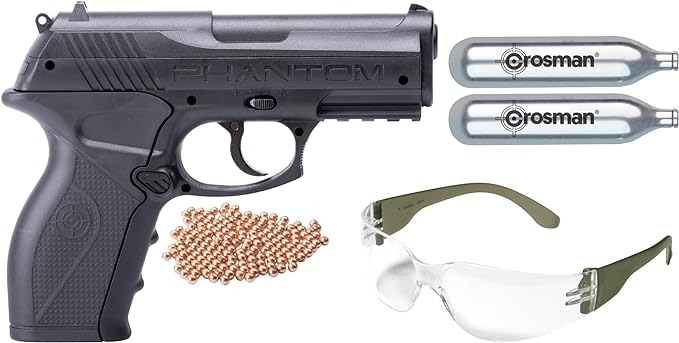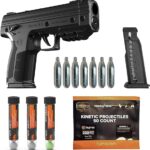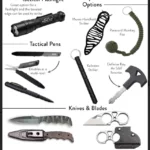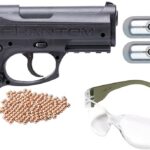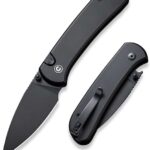In a world where personal safety is most important, people are in search of adaptable tools for self-defense. An attractive choice that frequently sparks interest is the BB Guns for Self-Defense. In this extensive guide exploring self-defense, we highlight the effectiveness of employing a BB gun for personal safety. At its core, a BB gun is an air-powered or CO2-driven device designed to propel spherical projectiles, typically made of steel or lead, at varying velocities. The basic components include a barrel, a propulsion mechanism, and a trigger mechanism for control. Understanding these fundamental elements is essential to appreciating how BB guns operate in a self-defense context.
Can you use a BB gun for self-defense?
Individuals can consider using a BB gun for self-defense under specific circumstances. BB guns are non-lethal weapons that can serve as barriers in place of regular weapons. They are particularly suitable for scenarios where lethal force may not be justified or desired. However, it’s essential to acknowledge the limitations of BB guns, such as their limited stopping power and shorter effective ranges compared to conventional self-defense tools. Before incorporating a BB gun into a personal safety strategy, individuals should prioritize comprehensive training, understand local laws, and be aware of the potential legal and ethical considerations associated with their use. Responsible ownership, along with an awareness of the strengths and weaknesses of BB guns, ensures a more informed and effective approach to self-defense.
read: Pocket Knife for Self-Defense
Types of BB Guns: Exploring Varieties for Self-Defense and Recreation
BB guns come in various types, each tailored to different purposes and preferences. Understanding these variations is crucial for individuals seeking the right fit for self-defense or recreational use.
Spring-Piston BB Guns: One of the most common types, spring-piston BB guns, utilizes a spring mechanism for propulsion. These guns are manual and require users to cock the spring before each shot, making them suitable for beginners due to their simplicity and reliability.
CO2-Powered BB Guns: CO2-powered BB guns utilize compressed carbon dioxide to propel projectiles. These guns are semi-automatic or automatic, offering rapid-fire capability and consistency in performance. They are popular for target shooting and recreational use.
Pneumatic BB Guns: Pneumatic BB guns use compressed air for propulsion and are available in multi-pump or single-stroke pneumatic varieties. They offer varying power levels and are known for their accuracy, making them favoured for target shooting and precision-focused activities.
Gas-Powered BB Guns: Gas-powered BB guns utilize gas, such as green gas or propane, to fire projectiles. These guns often mimic the weight and feel of real firearms, appealing to enthusiasts and collectors.
Electric BB Guns (Airsoft): While not technically BB guns, electric airsoft guns fire plastic BBs and operate using rechargeable batteries. These guns are popular in competitive gaming and training scenarios due to their accuracy and versatility.
Understanding these types enables individuals to make informed choices based on their intended use and preferences, ensuring a more satisfying and suitable BB gun experience
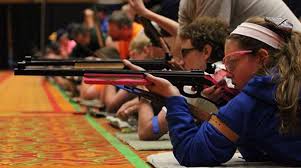
Advantages and Disadvantages of Using BB Guns for Self-Defense
In the pursuit of an effective self-defense strategy, it’s essential to weigh the pros and cons of using BB Guns for Self-Defense. This section aims to provide a balanced exploration of the advantages and disadvantages, empowering individuals to make informed choices regarding their safety.
Advantages of Using a BB Gun for Self-Defense:
- Non-lethal Nature: BB guns are designed to be non-lethal, offering a less extreme option for self-defense scenarios. This can be particularly appealing for those who seek to deter potential threats without causing lasting harm.
- Cost-effectiveness: Compared to traditional firearms, BB guns are generally more affordable. This cost-effectiveness makes them accessible to a broader range of individuals seeking a self-defense solution on a budget.
- Ease of Use: BB Guns for Self-Defense are often straightforward in design and operation, making them accessible to users of various skill levels. This ease of use can be advantageous, especially for individuals new to self-defense tools.
Disadvantages and Limitations:
- Limited Stopping Power: While BB guns can be effective in certain situations, they inherently possess limited stopping power compared to other self-defense options. This limitation is crucial to consider when evaluating their suitability for personal protection.
- Range Constraints: BB guns typically have shorter effective ranges compared to other firearms. Understanding these range constraints is vital for users to gauge the appropriate distance for engagement in self-defense scenarios.
- Potential Legal Ramifications: Despite being non-lethal, the use of BB guns may have legal consequences if not employed responsibly. Understanding and adhering to local laws is essential to avoid the legal complications associated with their use.
As we explore the advantages and disadvantages, it becomes evident that a nuanced understanding of BB guns is crucial for effective integration into one’s self-defense strategy.
Alternatives to BB Guns for Self-Defense: Exploring Effective Options
While BB guns offer a non-lethal approach to self-defense, several alternatives exist that cater to diverse preferences and scenarios, providing individuals with varied options for personal protection.
- Pepper Spray: Pepper spray is a popular choice for self-defense due to its effectiveness in disabling attackers temporarily. It irritates the eyes, skin, and respiratory system, providing a window for escape.
- Stun Guns/Tasers: Stun guns or tasers deliver an electric shock upon contact, momentarily incapacitating attackers. These devices are compact and can be effective at close range.
- Personal Alarms: Personal alarms emit loud, attention-grabbing sounds when activated, potentially deterring assailants and alerting others in the vicinity.
- Self-Defense Keychains: Self-defense keychains often feature sharp edges or pointed tips, providing a discreet yet effective means of defense.
- Flashlights with Stun Features: Flashlights equipped with stun capabilities offer both illumination and the ability to deliver an electric shock, serving as a dual-purpose self-defense tool.
Exploring these alternatives presents individuals with a range of choices, each with its own unique features and advantages for personal safety and self-defense scenarios.
Conclusion
In concluding the discussion on the role of BB guns for self-defense, it’s crucial to recognize their place within the spectrum of personal safety tools. BB guns offer a non-lethal option for individuals seeking a means of protection in specific circumstances.
While BB guns present advantages such as affordability, ease of use, and non-lethal nature, their limitations in stopping power and range should be acknowledged.
Ultimately, the decision to utilize a BB gun for self-defense should align with individual needs, local regulations, and a commitment to responsible ownership. Combining proper training, compliance with legal frameworks, and awareness of the tool’s limitations ensures a more informed and effective approach to integrating BB guns into personal safety strategies.
